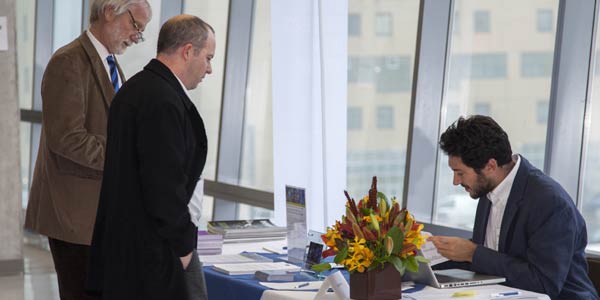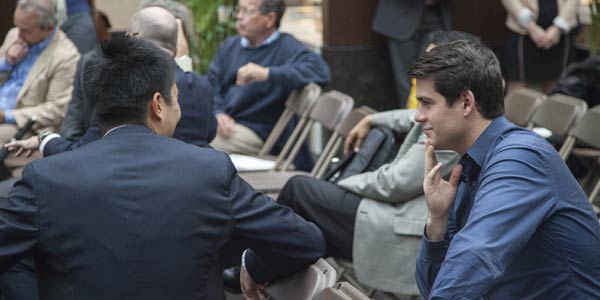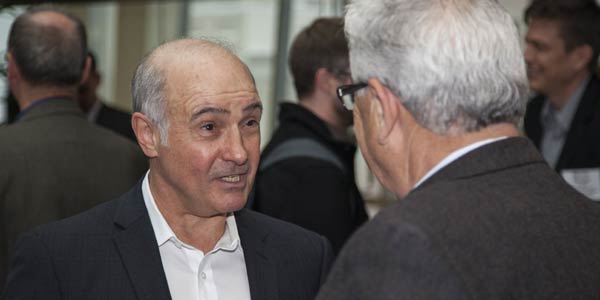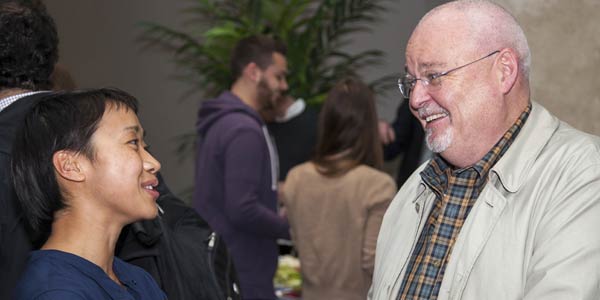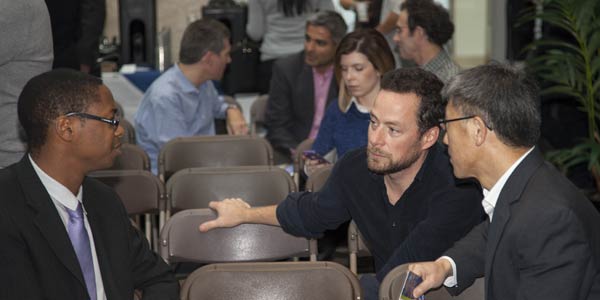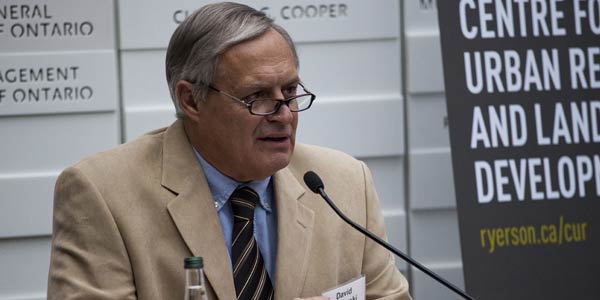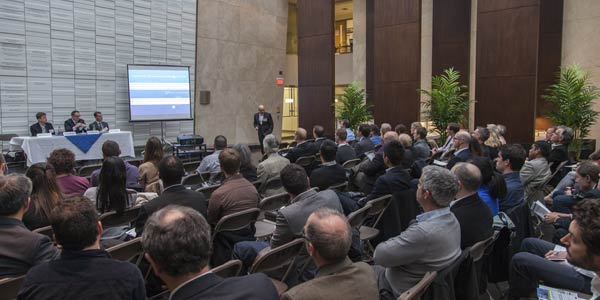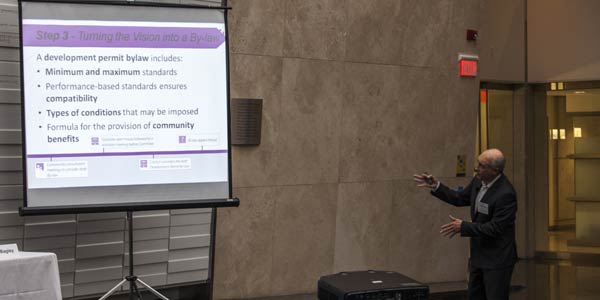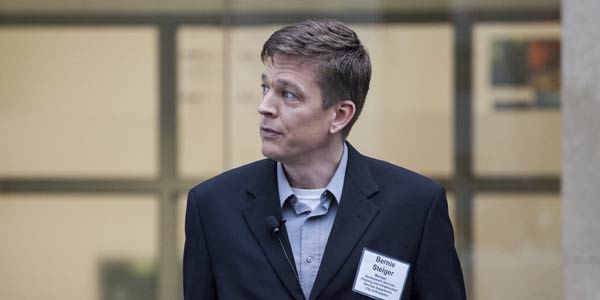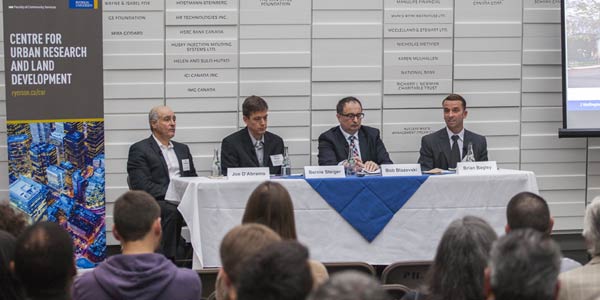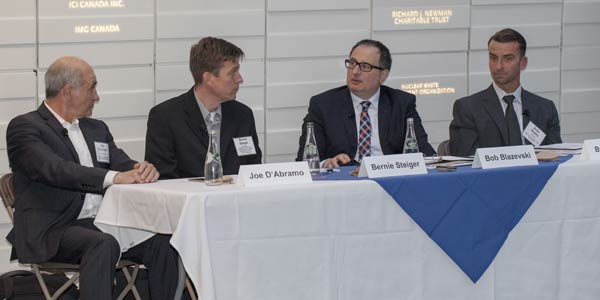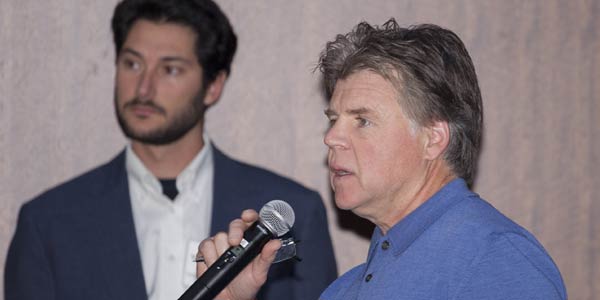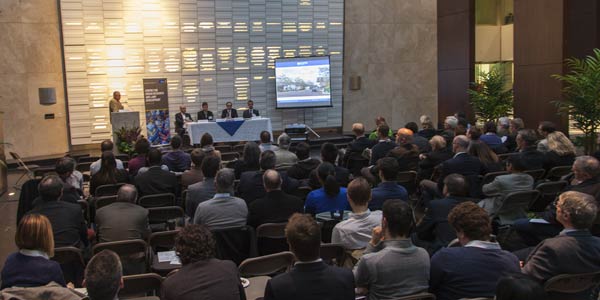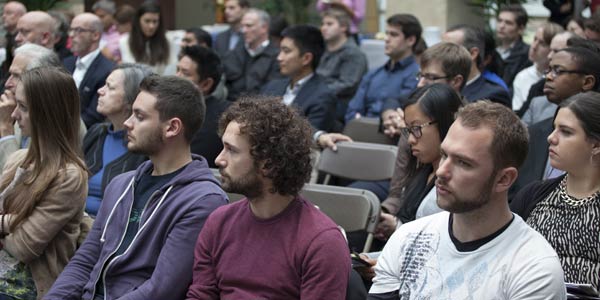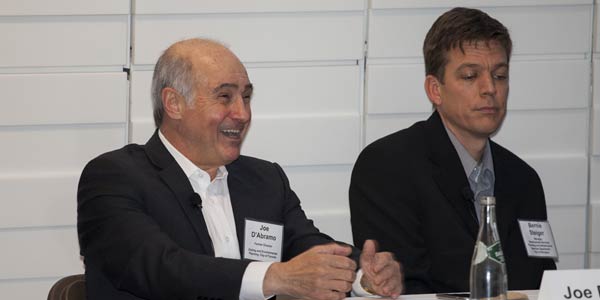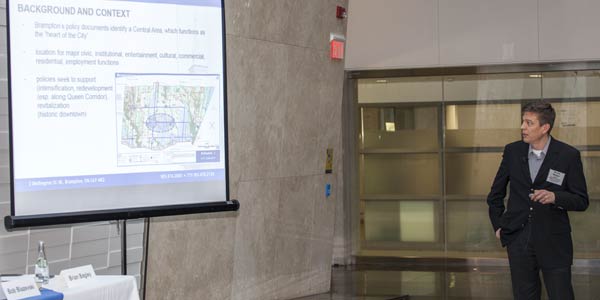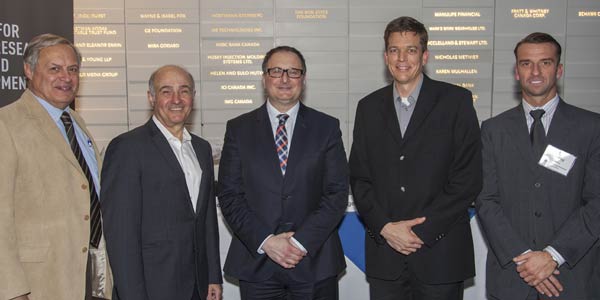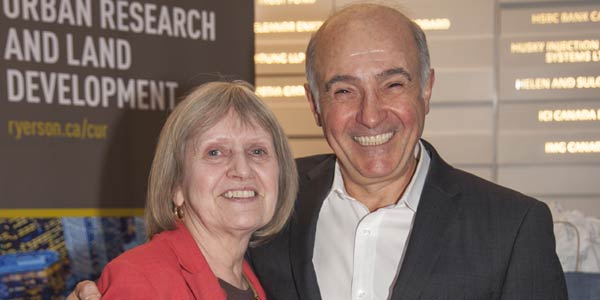News & Events
Issues and Impacts of the Development Permit System in Toronto Area Municipalities
Photo credits: Jack Landau
Policy Seminar Summary
On Monday October 20th, 2014, a capacity crowd gathered at Toronto Metropolitan University’s Sears Atrium for a robust discussion concerning the Development Permit System, a new planning tool recently adopted by the City of Toronto. As the Development Permit System represents a significant shift in how development, consultation and many other facets of urban planning are managed, this seminar set out to explain how the approach works and to provide a forum for stakeholders to comment on its challenges and opportunities. The session raised many different perspectives and viewpoints in a constructive way, as panelists addressed questions from each other and from the audience.
Panelist Perspectives
Joe D’Abramo – Former Director, Zoning and Environmental Planning, City of Toronto
As one of the driving forces getting the Development Permit System off the ground during his time at the City of Toronto, Mr. D’Abramo set out to explain how the Development Permit System (DPS) works, and more importantly, why it is needed. Starting off with a comparison of current zoning processes versus a DPS, the presentation aptly pointed out that the way we do development in Toronto is based more on exceptions to the rule of zoning. A series of maps pointed this out graphically, demonstrating that the number of Official Plan Amendments in the downtown alone suggest that current zoning does little to meaningfully direct growth.
The presentation went on to make the point that we need to shift to a more “performance-based” planning system. This means that development applications should be evaluated in relation to their impact and compatibility of their surroundings, which the DPS sets out to do through specific, yet flexible development criteria. The talk closed out by stressing that the DPS offers a greater degree of certainty, which is essential for coordinating the services and infrastructure needed to support a high quality of life as the city grows.
For Mr. D'Abramo's presentation please (PDF file) click here.
Bernie Steiger – Manager, Development Services, Planning and Infrastructure Services Department, City of Brampton
This panelist offered an on-the-ground perspective on the DPS, as his team has been actively implementing the approach on North Main Street in Brampton. The City of Brampton was drawn to the DPS as it appeared to be a flexible tool that closely links area-based urban design criteria with development approvals. The presentation stressed that to garner buy-in for the DPS (or any new approach) it must be presented as its own approach that can achieve outcomes that existing tools cannot. Currently, Brampton is drawing closer to passing and implementing its own DPS by-law.
The presentation detailed the rigorous process of implementing the policy frameworks and working through the Ontario Municipal Board appeals processes needed get the DPS off the ground. Although the initial uptake was time consuming and onerous, the presentation stressed that subsequent DPS area by-laws will be much easier and that the City is actively pursuing the approach in other areas. The presentation closed by stressing that establishing public buy-in and anticipating an intensive uptake process are important for municipalities to understand when looking to take up a DPS. Once these hurdles are cleared, it was suggested that the DPS presents planning opportunities that have not yet been possible.
For Mr. Steiger's presentation please (PDF file) click here.
Bob Blazevski – Executive Vice President, Diamond Corp.
This presentation considered the DPS from the perspective of builders and developers, but also raised broader issues of how policies could be introduced in a more equitable way. The talk began by emphasizing that the DPS is an untested idea given the unique political and development context of Toronto. It was argued that city-wide application of the DPS is moving too fast in terms of implementation, as it should instead be tested as a pilot project (an area-specific Official Plan Amendment) before it is offered as a city-wide planning tool. Further questions were raised regarding a perceived lack of flexibility in terms of architectural innovation and its ability to respond to economic conditions and building code changes.
The main points of the presentation centred around implementation issues, with questions around how the existing development pipeline would be treated. Overall, discussion suggested that the City of Toronto slow down the implementation of the DPS until more can be learned from pilot projects in small, manageable areas. The presentation concluded with remarks to all panelists, urging careful consideration of the costs involved in implementing a complex, untested approach on a large scale.
Brian Bagley – President, Upper Jarvis Neighbourhood Association
Touching on the need for communities to articulate their priorities, this talk drew parallels between grassroots neighbourhood visioning and the visioning process of the DPS. Mr. Bagley explained how the Upper Jarvis Neighbourhood Association drafted a document that articulates their priorities and expectations as their neighbourhood grew. This process of thinking about “what you want to see” is similar to the front-ended process of creating a DPS area by-law. The talk went on to point out that fully articulated vision documents give a tangible case to present to developers and elected officials, and ultimately increase the voice of the community.
Questions were raised around the flexibility of a DPS, especially if the resident representatives were inexperienced or lacking expertise on planning and policy. So long as this flexibility is accounted for, the overall message was that the DPS could be a valuable safeguard for the interests of all involved and that greater certainty is something that the City needs to work toward. The talk closed with the admission that many neighbourhood groups do not fully understand how the DPS works, suggesting that an expanded public education approach would be useful.
PRESENTATIONS
Please click the following links to view presentations from this event:
For Mr. D'Abramo's full presentation, please (PDF file) click here.
For Mr. Steiger's full presentation, please (PDF file) click here.
On October 20th, 2014, CUR hosted "Issues and Impacts of the Development Permit System for Toronto Area Municipalities." Thank you to all of our speakers and attendees for participating in this informative discussion.
GUEST SPEAKERS INCLUDED:
JOE D'ABRAMO
Former Director, Zoning and Environmental Planning, City of Toronto
BOB BLAZEVSKI
Executive Vice President, Diamond Corp.
BERNIE STEIGER
Manager, Development Services, Planning and Infrastructure Services Department,
City of Brampton
BRIAN BAGLEY
President, Upper Jarvis Neighbourhood Association
MODERATED BY:
DAVID AMBORSKI
Director, Centre for Urban Research and Land Development
